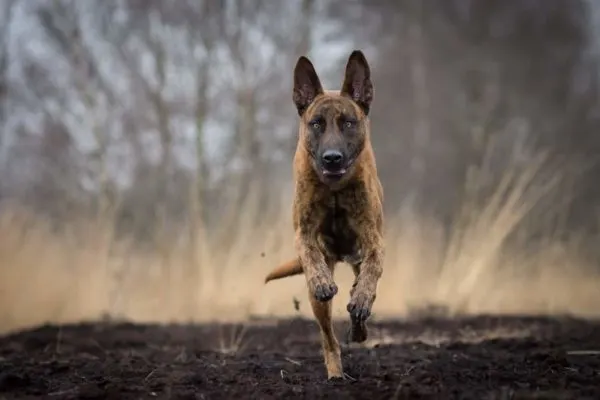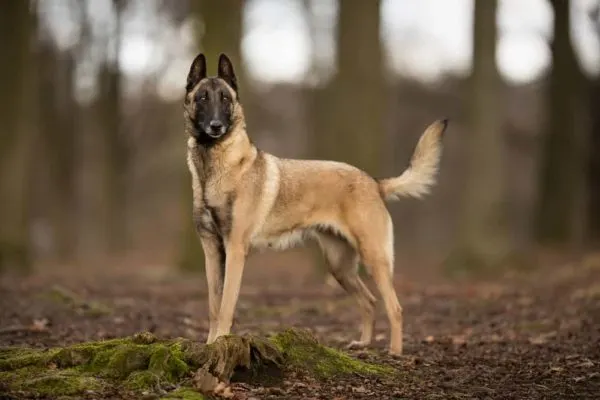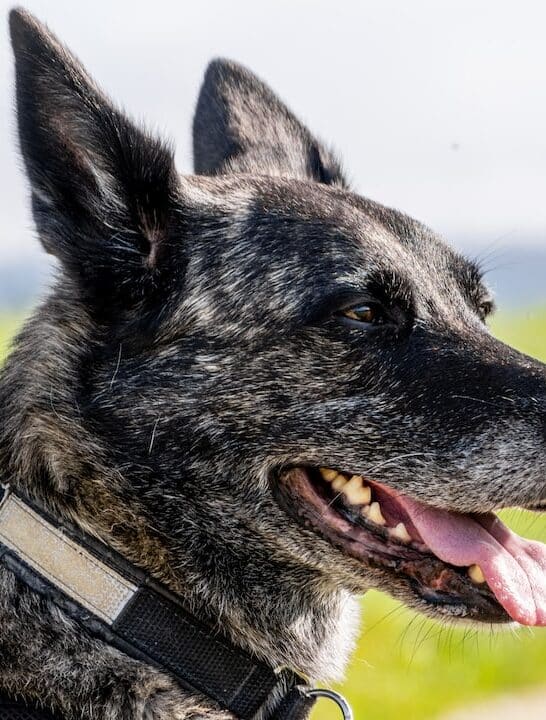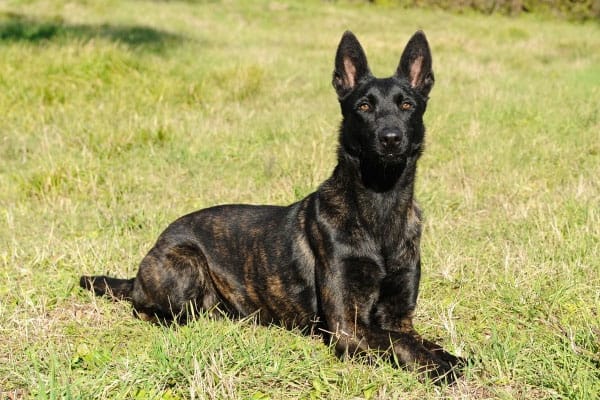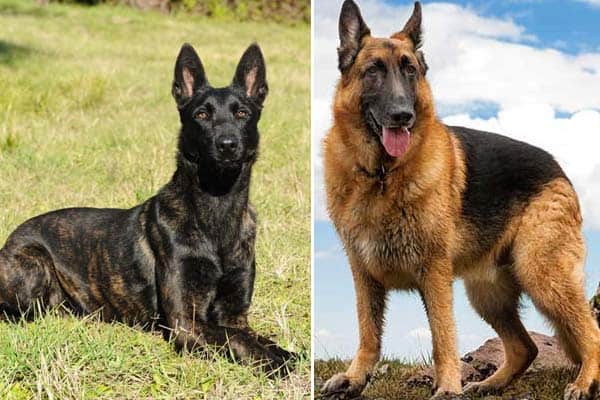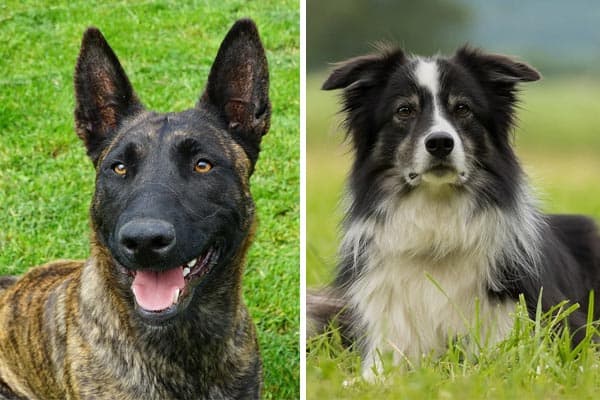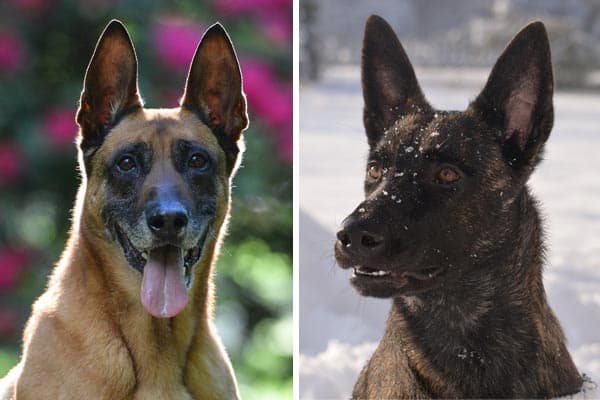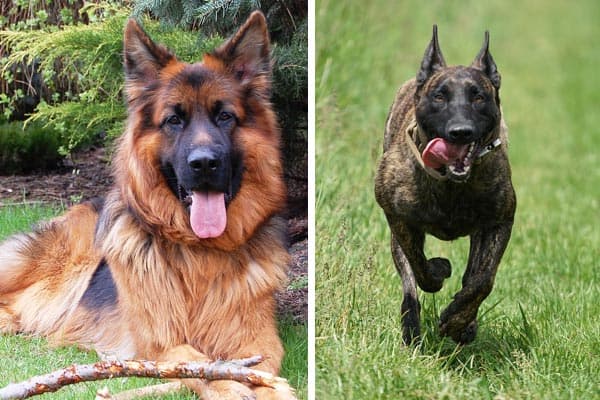Dutch Shepherd Vs. Belgian Malinois: Both Brave, Smart – But Which Is Right for You
Choosing a new canine companion is a huge commitment. With so many wonderful dog breeds to choose from today, it is no wonder so many dog lovers have a hard time making up their minds.
This is especially the case when two dog breeds are quite similar in certain areas that are particularly important, such as the Dutch Shepherd vs. Belgian Malinois.
In one sense, you really can’t make a “wrong” choice when you are looking at two such beloved, loyal, brave dog breeds.
The key is to study each breed in detail so you can find out which dog – the Belgian Malinois or the Dutch Shepherd – is the best fit for your home, lifestyle, and family.
Dutch Shepherd Vs. Belgian Malinois
When comparing the Dutch Shepherd vs. Belgian Malinois, you are essentially comparing two working dog breeds. This means that you are likely to see more similarities than differences. For example, both dog breeds are energetic and do best when they have lots of daily activities or a job to do. Both are large dog breeds that will have longer puppyhood. And both will bond closely with you.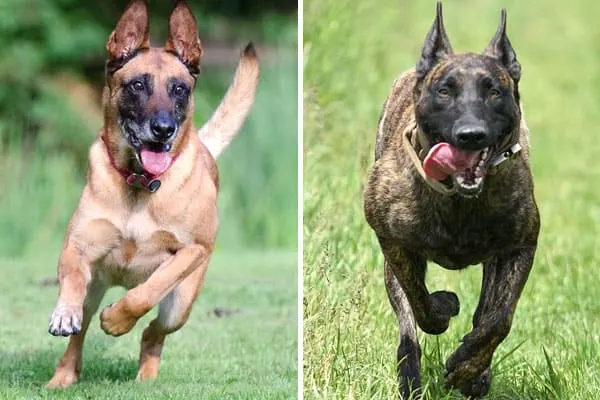
So the only question is – which dog breed is the best fit for you?
See a Dutch Shepherd Vs. Belgian Malinois
This short, informative video gives you some important highlights for comparing the Dutch Shepherd vs. Belgian Malinois as an adult dog.
Dutch Shepherd Vs. Belgian Malinois: Dog Breed History
Learning more about the history and origins of each dog breed – in this case, the Dutch Shepherd and the Belgian Malinois – will give you a much better idea of what these dogs were originally bred to do and what kind of daily schedule is best for them.
One of the biggest differences between these two breeds is that the Dutch Shepherd is a so-called “natural” dog breed – a breed that evolved alongside people rather than a product of deliberate human-made canine crossbreeding programs.
The Belgian Malinois, in contrast, is a human-made purebred dog breed. The Belgian Malinois is the best-known of four similar dog breeds from the area around what is now Belgium.
However, both the Dutch Shepherd and the Belgian Malinois are working dogs through and through.
Dutch Shepherd history
The Dutch Shepherd as a breed evolved naturally alongside people in what is now The Netherlands.
According to the American Dutch Shepherd Association, this breed was first recognized formally and given a breed standard in 1898.
Fans of the breed often state that the Dutch Shepherd looks quite like a wild wolf. This is perhaps part of the Dutch Shepherd’s appeal for some owners today, but this dog breed also has many other great qualities to recommend it for the right person.
Belgian Malinois history
The Belgian Malinois is a breed that hails from a region in Belgium called Malines.
According to the American Belgian Malinois Club, this breed is one of four similar breeds: the Groenendael, Tervuren, and Laekenois are the others.
All four dog breeds are interchangeably known as Belgian Shepherd Dogs. And all four take their breed name from the region or town in Belgian with which they are most closely associated.
The Belgian Malinois was recognized with a formal breed standard in 1892, just seven years before the Dutch Shepherd received the same recognition.
Dutch Shepherd Vs. Belgian Malinois: Personality & Temperament
This is an area where you are likely to see a lot of similarities between the Dutch Shepherd and the Belgian Malinois.
Since both are working dog breeds and both have historically worked like similar breeds – herding breeds, herding breeds, herding breeds, and herding breeds – they can have similar personality and temperament traits.
However, there are some important differences as well that may indicate which is a better family pet for you.
Dutch Shepherd personality and temperament
The Dutch Shepherd has a long history as an all-around canine farmhand, doing odd jobs and pitching in as needed and basically being everywhere at once.
Dutch Shepherds crave human company and contact but they are also very independent-minded. In a working dog situation where the dog is “on duty” for hours at a stretch, this is a positive attribute.
In a companion canine setting in a family, there is a risk that your Dutch Shepherd’s independent nature might settle into stubbornness.
This means that you will have more dog agility training and socialization to do to keep your dog engaged and at the center of your family life in healthy and positive ways. Getting your dog involved in canine athletics is highly recommended for this active dog breed.
Belgian Malinois personality and temperament
The Belgian Malinois absolutely needs to be your canine partner and companion in life. These dogs cannot get by with substitute companies from other dogs or other family pets.
The breed has evolved to work and live side by side with people and to remain active and engaged in a job for long hours at a stretch.
The best-case scenario is to get active with your dog in canine athletics, Schutzhund (K-9 protection) training, and other outdoorsy activities that will give your high-energy dog an outlet and a job to master.
These dogs will always be aloof and wary of unknown people and animals but will be very affectionate and loving towards you and your family once properly trained and socialized.
Dutch Shepherd Vs. Belgian Malinois: Size, Height, and Weight
One of the most interesting similarities between the Dutch Shepherd and the Belgian Malinois is that both dog breeds were at some point crossed briefly with the iconic German Shepherd.
This shared relative is perhaps one reason that Dutch Shepherds and Belgian Malinois tend to look more alike than different.
Dutch Shepherd size, height, and weight
According to the American Kennel Club (AKC), the Dutch Shepherd can weigh anywhere from 42 to 75 pounds when fully grown.
This dog typically stands 21.5 to 24.5 inches tall (paw pads to shoulder tops).
The Dutch Shepherd really can look like a cross between a wild wolf and a German Shepherd, especially in the short-hair coat type, which we will talk about more here shortly.
Belgian Malinois size, height, and weight
According to the American Kennel Club (AKC), the Belgian Malinois can weigh anywhere from 40 to 80 pounds when fully grown.
This dog typically stands 22 to 26 inches tall (paw pads to shoulder tops).
The Belgian Malinois is a lean and rangy dog with a slim frame and long legs. They bear more than a little resemblance to the German Shepherd, especially in the long muzzle and erect ears.
Dutch Shepherd Vs. Belgian Malinois: Training and Exercise Needs
Many modern purebred dog breeds are specifically bred to be family lap dogs – house dogs that can enjoy simply sitting with their people and maybe going for a leisurely walk or playing a round of fetch or two before bed.
The Dutch Shepherd and the Belgian Malinois do not fit into this category!
Both these dogs are true working dog breeds that have special training and exercise needs throughout their lifespan.
Dutch Shepherd training and exercise needs
As this dog’s breed name indicates, Dutch Shepherds have always been one of a herding breeds and livestock dogs.
The Dutch Shepherd has a long history as a tireless farm worker, guarding and herding livestock, protecting the family and the farm, and working out in difficult weather conditions without complaint.
Dutch Shepherds are also popular for military, police, and K-9 working dogs. They make amazing canine athletes and excel in competition.
Because the Dutch Shepherd breed has evolved to work long and hard independently of their people, they can be stubborn and independent.
Early and ongoing socialization and training will be necessary to help these dogs become happy and well-adjusted members of a family and community.
Belgian Malinois training and exercise needs
The Belgian Malinois, like the Dutch Shepherd, is a true working dog breed with the daily activity needs and energy levels to match.
These dogs are first-draft picks for military, police, and K-9 roles. They make excellent farm dogs, guarding and protection dogs, and competitors in canine athletics. They are also great for guide dog and service dog roles.
Belgian Malinois need early and ongoing socialization and training to learn how to tell the difference between a threatening person, animal, or situation and normal daily family and community life.
These dogs have a very strong prey drive (a desire to hunt and chase things) and should never be let off-leash in an open area for this reason.
Dutch Shepherd Vs. Belgian Malinois: Coat Care, Shedding & Grooming
One of the biggest questions many aspiring dog owners have about different dog breeds is what kind of coat color and type ( like a versatile double coat ) their new pup will have.
Some dog owners that have pet dander allergies are particularly concerned about shedding. All dogs shed, and the protein that causes the allergies is in the dog’s skin, urine and saliva, not on the hair.
However, the more contact you have with your dog’s hair, the more allergic you are likely to feel.
Unfortunately, working dog breeds as a general rule are visibly shedding dog breeds. The shedding is a vital part of keeping the protective coat of a working dog functional.
So let’s take a closer look at what to expect from the Dutch Shepherd vs. Belgian Malinois coat.
Dutch Shepherd coat care, shedding, and grooming
The Dutch Shepherd is a natural dog breed. This means the breed evolved naturally alongside people instead of being genetically engineered by breeders as so many purebred dog breeds are today.
There tends to be more appearance and coat type variation within a breed when the breed is naturally occurring and this is definitely the case with the Dutch Shepherd.
Dutch Shepherds have three different coat types: short coat hair, long coat hair, and rough coat hair.
All will need regular brushing – long hair more than the other two types. The long hair type may need professional grooming and clipping.
All three coat types are double layers and will shed both year-round and seasonally.
Belgian Malinois coat care, shedding, and grooming
The Belgian Malinois has more coat uniformity. All purebred Belgian Malinois dogs are short-coated. The coat is double layer and will shed seasonally and year-round.
Regular brushing and bathing as needed is all the coat care you will have to do. It becomes more necessary in the shedding season.
| Image | Title | Buy |
|---|---|---|
 | Furminator Undercoat Deshedding Tool for Large Dogs – Long Hair | Buy Now |
 | TropiClean Hypo-Allergenic Shampoo Puppies | Buy Now |
Dutch Shepherd Vs. Belgian Malinois: Longevity & Health Issues
Due to intense breeding to a breed standard, far too many modern purebred dog breeds have known genetic health issues that can be passed from parent dogs to puppies.
The more you can learn about possible genetic or heritable health issues in modern canines, the less likely you will be to make a heartbreaking commitment to a puppy who will grow up to have serious and expensive health issues.
Reputable breeders should happily show you the results of all recommended or required genetic tests for both parent dogs. A health-focused breeder will also give you records of all required immunizations and an initial guarantee of the puppy’s good health.
Do not work with a dog breed that is unwilling or unable to provide you with all of these documents.
Dutch Shepherd longevity and health issues
According to the American Dutch Shepherd Association, there are only three known potential genetic health issues to be aware of:
- Hip dysplasia
- Eye issues
- Anesthetic sensitivity
Overall, the Dutch Shepherd has a life expectancy of 11 to 14 years.
Belgian Malinois longevity and health issues
According to the Canine Health Information Center (CHIC) database, the Belgian Malinois breed has the following known possible genetic health issues you need to be aware of:
- Hip dysplasia
- Elbow dysplasia
- Eye issues
The Belgian Malinois has a typical life expectancy of 14 to 16 years.
Dutch Shepherd Vs. Belgian Malinois: Guarding and Protection Instincts
Both the Dutch Shepherd and the Belgian Malinois are highly respected for their guarding and protective instincts.
Both dogs have come from a background where guarding and protecting are central to their daily “job descriptions.” As such, they are remarkably alike in their talents in these areas.
Dutch Shepherd guarding and protection instincts
The Dutch Shepherd has a long history of working as a guard dog for people, animals, structures, and the land they rest on.
You will never have to worry about your Dutch Shepherd not letting you know when someone is at the door or a squirrel is in the backyard.
These dogs are exceptional guarding and protective dogs. However, they are also herding dogs and may try to “herd” everyone in the family, including small children and pets.
Because Dutch Shepherds are larger and powerful, it will be important to teach your dog how to play gently with kids and how to react if your kids have friends over to play with.
Belgian Malinois guarding and protection instincts
The Belgian Malinois is one of the all-time top choices for police, military, and K-9 work today. These dogs are big, powerful, and unstoppable in their drive to protect, guard, and defend.
This makes the Belgian Malinois a natural pick for a guard and protection dog. But it also means you will have more work to do to make sure your dog is trained to interact appropriately with you and your family, with friends and neighbors, and with strangers.
Dutch Shepherd Vs. Belgian Malinois: Good with Kids & Other Pets
One of the more important breed differences between the Dutch Shepherd and the Belgian Malinois shows up when you see each dog breed interacting with kids and other family pets.
Dutch Shepherd good with kids and other pets
The Dutch Shepherd may be a working and herding dog with strong chasing and guarding instincts, but with the right training and socialization, this dog can potentially get along peacefully with other family pets according to Armor K-9.
This breed also does well with kids overall, but supervision is recommended until kids are old enough to learn how to appropriately interact and play with a dog.
Belgian Malinois good with kids and other pets
The Belgian Malinois is not an ideal choice of companion canine for families with other small vulnerable family pets.
The Belgian Malinois can get along with kids but will need lots of early and ongoing socialization to learn to be tolerant of rough play.
Dutch Shepherd Vs. Belgian Malinois: Which Is the Right Dog For You?
Now that you have a lot more information about the Dutch Shepherd vs the Belgian Malinois, you can begin to think through which of these respected working dog breeds might be the best fit for your lifestyle, family, and schedule.
Recommended reading
Frequently Asked Questions
Is a Dutch Shepherd an Aggressive Breed?
Dutch Shepherds are not dogs you see in the US very regularly. But if you do get the chance to meet one of these beautiful canines, they will certainly leave an impression on you.
Their friendly yet alert eyes, wolf-like features, and pointed, erect ears make these dogs look like they’re ready to pounce at any moment. And they are! Any action and they are ready for it. But are these family dogs aggressive at times?
Well, Dutch Shepherds are certainly naturally protective over their families but they can not be deemed to have an aggressive nature.
Of course, some dogs that haven’t properly socialized when young can develop behavioral problems and health problems that can come out as aggression at times.
Before the age of 20 weeks, Dutch Shepherds should be handled by many different people and experience a good deal of socializing. If this doesn’t happen, these dogs can grow up to be fearful and develop unwanted behavioral issues.
Are Dutch Shepherds hard to train?
Dutch Shepherds have a long history as farmhands where they have helped with the odd farm job. Basically, they have been relied upon to do many different tasks when needed.
This wonderful breed tends to crave human attention and company but they are also incredibly independent. Working Dutch Shepherds can remain “on duty” for hours on end without leaving their post.
Due to their hard work ethic, there is no surprise that Dutch Shepherds are very smart animals that can learn very quickly. This makes them a treat to train.
However, challenges do arise as these dogs are bred to make their own decisions, especially when working. Therefore, their independent thinking can obstruct their obedience at times.
A dog obedience course can greatly help a Dutch Shepherd learn new skills. Though they do need to learn at an early age that you, the owner, are the pack leader and not them.
Do Belgian Malinois bite their owners?
Belgian Malinois is considered one of the most aggressive dog breeds. However, careful training and socialization can see them become loving and loyal family members.
These dogs are extremely smart and due to their strong physical capabilities, they are often trained to be working dogs for the police or the military. While these dogs excel in such environments, they are highly trained.
If a Belgian Malinois is untrained, it can develop bad behavioral problems with one being, biting.
Belgian Malinois dogs are known to destroy items within properties and show signs of an array of negative neurotic behaviors. But is it safe to assume that these dogs are born aggressive?
While it is possible, that many aggressive personality traits come from the way the dog is brought up.
A Belgian Malinois needs to be your partner and companion in life. They do not do well when in the company of other dogs or family pets.
With affection and love, there should be a much lower risk of a Belgian Malinois biting you or others.
Do belgain Malinois bark a lot?
Belgian Malinois are generally very vocal. They were originally bred for herding cattle and farm animals so they used their powerful bark to communicate with the herd. This was to help the animals get into form as well as protect them.
In modern times, Belgian Malinois is used by the military and police for private protection and security. In certain situations, they use their bark to communicate with their handlers and to protect people.
The same goes when they are kept as pets. Belgian malinois will use their bark to communicate with their families and warn of any potential dangers that could be lurking.














